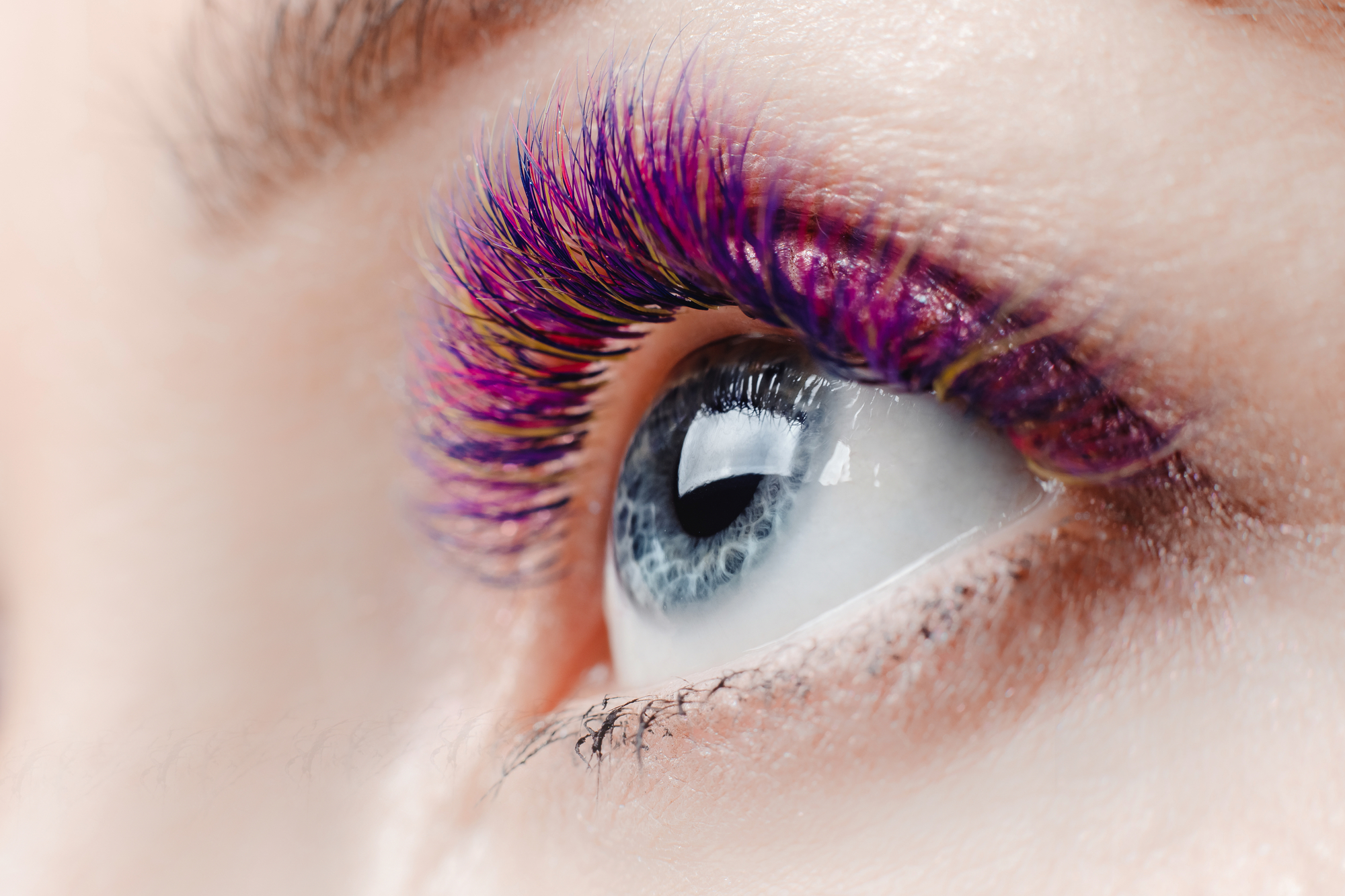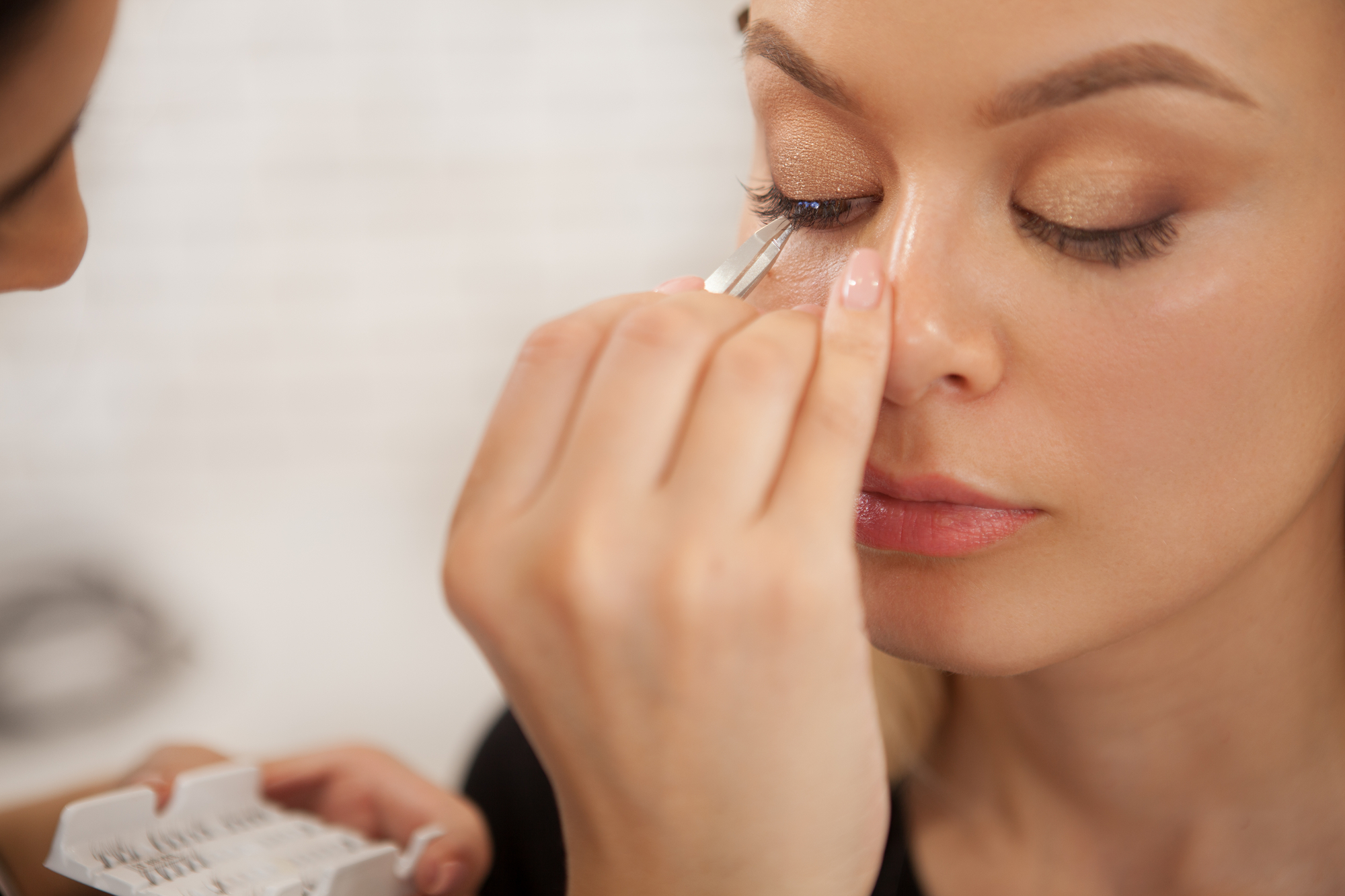Grasping the gist of getting glue off your eyelashes can seem like a daunting dilemma. You’ve likely encountered the sticky situation of trying to remove eyelash glue without causing damage to your delicate lashes or irritating your eyes.
While the summary provided outlines several methods, such as using an oil-based cleanser or a professional lash glue dissolver, understanding the nuances of each technique is crucial.
Before you resort to pulling or tugging at your lashes, let’s explore these methods in more detail. This way, you’ll be equipped with the knowledge to maintain the health and beauty of your eyelashes, leaving you wondering which method suits your needs best.
How To Get Glue Off Eyelashes?
To effectively dissolve eyelash glue, start by using an eye-safe oil-based cleanser.
This method isn’t only efficient but also gentle on your lashes, ensuring their health isn’t compromised during the removal process.
The first step in getting glue off your eyelashes involves soaking a cotton pad with the oil-based cleanser.
Coat your lashes thoroughly, as this ensures the cleanser can work its magic and dissolve the glue.
Once you’ve applied the cleanser, gently wipe downwards on your lashes. This action helps remove the dissolved glue without pulling or tugging, which could damage your delicate lashes.
It’s a gentle approach that respects the integrity of your natural eyelashes while ensuring the glue is effectively removed.
If you find that there’s still some glue residue clinging to your lashes, don’t worry. Take a cotton swab and gently dab at the remaining spots.
This targeted approach allows for a thorough removal of any stubborn glue bits that didn’t come off with the initial wipe.
Using an oil-based cleanser to remove eyelash glue isn’t only effective but also beneficial for maintaining lash health.
The gentle nature of the oil ensures that your lashes aren’t stripped of their natural oils, which could lead to dryness or breakage.
Plus, the thorough removal of glue residues prevents any potential irritation that could occur if glue remnants are left behind.
DIY Lash Remover Techniques
For those seeking a more hands-on approach, DIY lash remover techniques offer a safe and effective way to free your eyelashes from glue.
This method not only allows you to REMOVE the stubborn adhesive but also ensures that your delicate lashes are treated with care.
Here’s how you can safely dissolve the glue, cleanse your lash line, and reclaim the natural beauty of your eyelashes with ease.
- Soak a Cotton Pad in Dedicated Lash Remover: Begin by soaking a cotton pad with a remover specifically designed for lashes. Gently scrub at the base of the lash line to dissolve the glue. This step is crucial as it targets the foundation of the issue, ensuring that the adhesive weakens for easier removal.
- Comb Through Lashes for Thorough Coverage: After softening the glue, use the soaked cotton pad or a clean mascara brush to comb through your eyelashes. This ensures every strand is coated with the remover, making the glue come off effortlessly. It’s a gentle way to ensure no lash is left behind, glued and forgotten.
- Wipe and Cleanse for a Clean Finish: Finally, wipe down the applicator or comb to remove any lingering glue residue. Then, use a fresh cotton pad to cleanse the area thoroughly. This step removes the remnants of the glue and ensures your eyelids are clean, preventing any irritation or discomfort.
DIY lash remover techniques aren’t just about getting rid of unwanted glue; they’re about doing so safely and gently, preserving the health and beauty of your eyelashes.

Using Eye Makeup Remover To Dissolve Lash Glue
Switching to an eye makeup remover can effectively dissolve eyelash glue, offering a gentle yet efficient method for clearing adhesive from your lashes.
When you’re trying to remove glue, reaching for the right type of eye makeup remover is crucial. Opt for a gentle, oil-free formula to avoid irritation around the delicate eye area.
This kind of remover is specially designed to tackle the stubbornness of eyelash glue without causing discomfort.
To get started, pour a small amount of the eye makeup remover onto a cotton pad. The key here is to use just enough to dampen the pad without soaking it.
Then, gently press this cotton pad against your lash line. Hold it there for a few moments to let the remover work its magic and dissolve the glue.
This step is vital as it softens the adhesive, making the removal process much smoother and less risky for your lashes.
Next, with a light hand, gently wipe the cotton pad downwards along your lashes. This motion helps to remove the dissolved glue without tugging on your lashes, which can lead to unnecessary lash loss or damage.
Remember, the goal is to treat your lashes with the utmost care to preserve their health and appearance.
For a more comprehensive guide, consider watching a video demonstration on using eye makeup remover to get glue off eyelashes.
Visual representations can offer valuable tips and ensure you’re applying the remover correctly, safeguarding your lashes while efficiently clearing away the glue.
Professional Lash Glue Dissolver
While eye makeup remover is a great starting point, opting for a professional lash glue dissolver can offer an even more effective solution for removing stubborn eyelash adhesive.
Professional-grade dissolvers, such as BL Lashes Gel Remover and Lash Galore Cream Adhesive Remover, are specifically designed to tackle the tough adhesive bonds that keep your false lashes in place.
Their formulations are powerful enough to break down stubborn glue residue quickly and effectively, yet gentle enough to ensure the delicate eye area isn’t harmed in the process.
Using a professional lash glue dissolver isn’t just about safe removal; it’s about preserving the beauty and health of your eyes and lashes. Here are three key benefits you’ll love:
- Prevents Damage to Natural Lashes: The gentle formula of professional dissolvers helps to maintain lash health, ensuring your natural lashes remain intact and undamaged.
- Ensures Thorough Removal: With the ability to dissolve even the most stubborn glue residue, these dissolvers guarantee a clean slate for your lash line, leaving no residue behind.
- Safe for the Delicate Eye Area: Specifically formulated for use near the eyes, these dissolvers minimize the risk of irritation, ensuring a safe removal process.

Steaming Off The Glue
Steaming off the glue offers a gentle yet effective method to loosen eyelash adhesive, making it easier to remove without damaging your natural lashes.
This technique doesn’t just soften the glue; it respects the delicate nature of your eyelashes and ensures that the integrity of each lash is maintained throughout the removal process.
Whether you’re looking to take off a full set of falsies or just correct a few misplaced extensions, steaming is a reliable way to achieve your goal without resorting to harsh chemicals or rough handling that could lead to lash loss.
To get started, you can use a hot shower or a dedicated facial steamer to direct steam towards your eyes. Keep your eyes closed to avoid irritation.
The steam helps dissolve the glue’s bond to your natural lashes, making the adhesive easier to remove gently.
Typically, steaming your lashes for about 5-8 minutes should suffice. Here’s a quick guide to understanding why steaming is beneficial for eyelash glue removal:
| Benefit | Description | Technique |
|---|---|---|
| Gentle Removal | Steam softens glue without harsh chemicals. | Steaming |
| Preservation | Maintains the integrity of natural lashes. | Gentle |
| Effectiveness | Dissolves adhesive for easier removal. | Steam & Remove |
If some glue remains after steaming, you can follow up with a mild, oil-based remover for a thorough clean.
This two-step approach ensures that every trace of adhesive is gone, leaving your lashes clean, intact, and free from any potential damage.
Conclusion
So, there you have it! You’re well-equipped to tackle that stubborn glue on your lashes.
Whether you’re reaching for an oil-based cleanser, whipping up a DIY lash remover, using your go-to eye makeup remover, opting for a professional lash glue dissolver, or simply steaming it off, you’ve got plenty of options.
Remember, the key is to be gentle and patient. Don’t tug or pull at your lashes. With these methods, you’ll keep your lashes looking healthy and beautiful.

Hi! My name is Gemma, and welcome to Miss Makeup Magpie. I share helpful articles to help you with beauty tips, tricks and tutorials.









